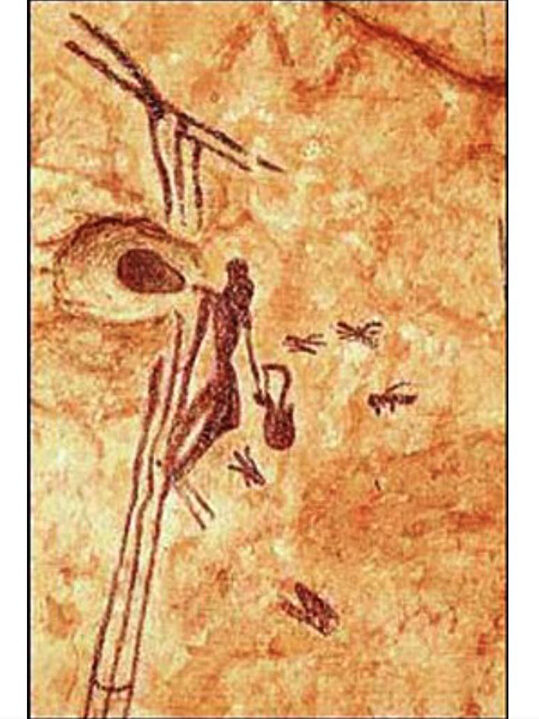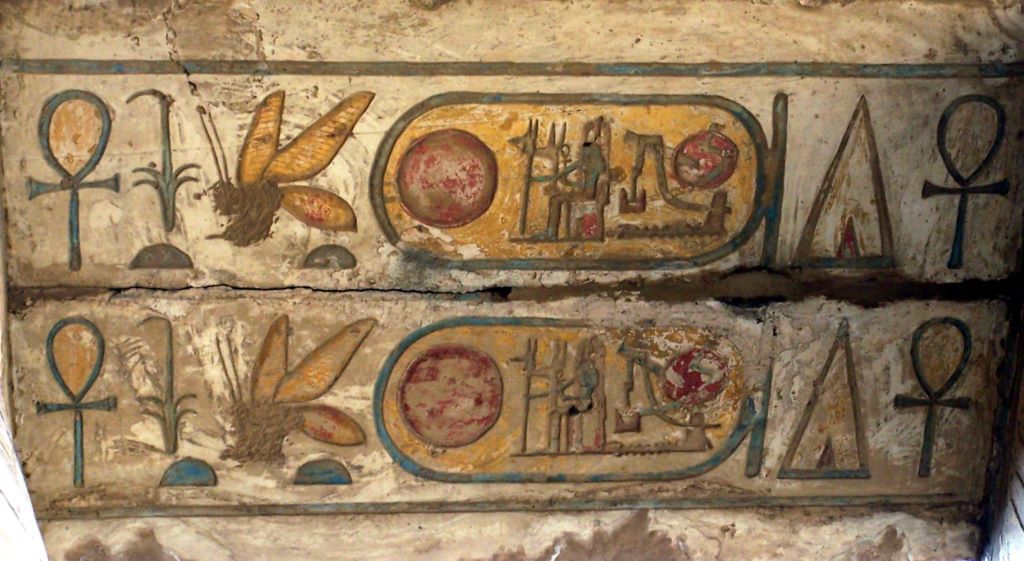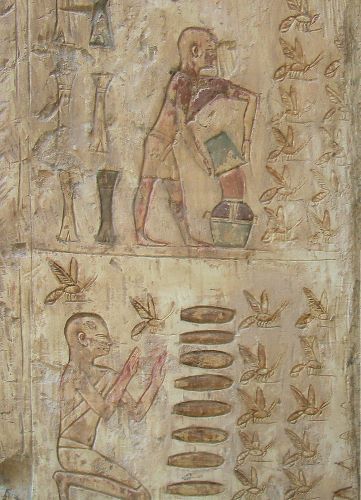Welcome to the first in this series where we explore bees and honey throughout history. This month, we travel far back in time to the prehistoric era and to ancient Egypt.
Prehistory
The oldest evidence of humans interacting with bees is found in the stunning artform of a cave painting. Cave art has a timeless simplicity and a deep connection with nature because it is painted by hand using natural pigments and it depicts the natural world. What fitting beginnings for the tale of bees in history!
The cave painting in question is located in Cuevas de la Araña in Valencia, Spain. It portrays a figure climbing a cliff or a tree to harvest honey from wild bees who are seen flying around this honey hunter. Braving the climb and a swarm of angry bees shows how important honey was to humans many thousands of years ago, just as it is today.

More proof of the human desire for bee handiwork is found in pottery dating from just after the last Ice Age. Scientists discovered traces of beeswax in these pots and jugs and jars, indicating that it had been stored, so it must have been considered a valuable resource.
The recognition of honey and beeswax as precious provisions travels far back through our ancestry. We can’t know for certain but prehistoric people may have had similar uses for these treasures as we do: honey could have been for food and medicine, while beeswax could have been for gluing and waterproofing. We’re not so different, are we?
Ancient Egypt
The ancient Egyptians were beekeepers! Like Matt, they were very excited about the occupation and began early, in around 3100 BCE, during the 1st Dynasty. The beehives they constructed were made of clay pipes stacked horizontally, reminiscent of modern day bee hotels, with the ends capped with timber. A small hole was made in one end to serve as a door for the residents.
The Egyptians came to perfect the art of harvesting honey by showing great respect to their colonies. The bees were presented with scented incense as an offering, perhaps as a mark of gratitude for the honey that was about to be received. Whether or not the ancient Egyptians intended it, this worked much like the modern day beekeeping tool of a smoker which is relied upon to calm bees when opening up the hive. It must have made the honey extraction process much smoother for these pioneering beekeepers.

The reverence for bees was not limited to beekeepers but was prevalent throughout Egyptian culture. The thorough records they kept and the stories they told using their Hieroglyphic picture-writing system is full of references to the sacred bee. Some scripts describe daily life with the bee, such as explaining their beekeeping methods. Others express their religious views on the bee, including their belief that bees are born from the tears of the sun god Ra and that honey is liquid gold. You can see why honey was the gift of choice when Egyptian pharaohs made offerings to the gods.
Honey and beeswax had many other uses in ancient Egypt too, including making candles, figurines and cosmetics. The use of beeswax and honey in cosmetics may have contributed to the Egyptian idea that their distinctive makeup routine was a spiritual affair. Naturally, they also loved the taste of honey so used it in many of their recipes. Whether it was painted on the face or consumed, the Egyptians harnessed the power of honey as a medicinal ingredient. When reading prescriptions from doctors written on papyrus, it was discovered that 500 out of 900 treatments included honey! Cleopatra clearly understood that there was goodness locked inside honey because she chose to bathe in milk and honey to keep herself looking radiantly beautiful.

It should come as no surprise that a spiritual society that respects bees and the liquid gold they produce will incorporate these into their funeral rituals. Thus, Egyptian tombs were decorated with pictures of honey being collected in jars and the baking of honey cakes, and the deceased were given pots of honey for the afterlife. A somewhat legendary tale tells of the discovery of these pots thousands of years later, and the immortal honey inside was still perfectly edible!